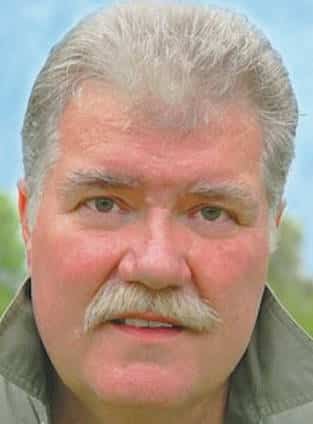
May is almost over, marking another month that will soon be finished and gone.
The upside is that in a couple of days, we old-school types get to flip the page on our big wall calendars—one of those oddly satisfying small observances the digital crowd forgoes.
In the meantime, eager June awaits—a bit impatient, anxious to start fresh and commence leading us along its pleasant path through spring’s final weeks, and thence onward into summer.
“Time is filled with swift transitions…” begins one of my favorite old hymns. Words of fundamental truth, applicable in so many ways.
Tomorrow is Memorial Day. Not just a holiday for backyard cook outs, but a day of remembrance, when many of us visit and decorate the graves of family and friends.
We make our rounds and place our flowers, often beside small red, white and blue flags commemorating a military veteran who served and sometimes died so that we could live in freedom.
Reminders of transitions are everywhere in a cemetery, and not all refer to those whose names are etched on stone. Transitions connect to ideas and abstract desires.
Time is, indeed, forever in a state of transition, always progressing from minute to day to week to month to season as it follows a circular, one-way track.
We arrange our lives along this linear trail—ephemeral creatures, bondservants to various needs and schedules. It might thus be argued that life itself is merely a transition between birth and death, and that which lies beyond.
Waters too deep to wade today. What I do know is we’re currently in the midst of multiple transitions.
May is ending. Come Tuesday we’ll transition into June. But June isn’t simply a new monthly start, it’s also the gateway to a bigger, longerlasting transition; a transition of seasons.
While it may not look or feel like it anymore, in spite of the verdant green landscape and recent high-80s weather, we’re technically still in spring. An official designation which will hold for the next three weeks, until June 20 and the passing solstice.
Now, don’t blame me, because I’m only the messenger, but I suspect it’s my duty as a nature scribe to point out yet another—though doubtless less thrilling—transition.
I’ll start with the science.
“Solstice” is a marker denoting astronomical passage. A mathematical reckoning point of an invisible moment when the tilt of earth’s axis begins inclining us away from the sun.
The catch comes because this is also the juncture where daylight’s duration pendulum begins swinging in the opposite direction. Tick becomes tock.
As we made our way through spring, each and every day gained an incremental measure of light. A minute here, a couple more there.
More light, longer days! Hooray! Since the season began, our days have slowly lengthened by more than three full hours. A whopping bonus of daylight time!
But that gaining trend ends at the solstice. It’s as if our time bucket suddenly springs a leak and we start losing light in drips and dribbles—a minute here, a couple more there.
Egads! Summer might have just begun. Yet at that very same instant, when considered from the perspective of our daily sunlight quota, we commence losing precious minutes of light, as we start heading towards winter!
Transitions can work in all sorts of directions. Not all are welcome.
Currently, the landscape is going through its final stages of leafing-out—the viridescent transition from winter’s starkness to summer’s lushness.
The array of greens visible a few weeks ago—lime greens, sage greens, emerald greens, pea greens, greens so bright they almost fluoresced, and pine greens so dark they appeared black from a distance—have toned up or down, disappearing chameleon-like into a more sedate monotone green, which is summer’s typical overall hue.
Spring’s early wildflowers are experiencing their own transitions. Pastel ephemerals such as bloodroot, trout lily, and Dutchman’s breeches are long gone until next year. In their place are dame’s rocket, wild iris, orange day lily, ox-eye daisy, and fleabane; brighter colors, for the most part, on sturdier plants.
Birds make transitions, too. And I’m not just talking migration. Most birds are still singing, though not as enthusiastically or often. Territorial boundaries were announced and settled weeks ago. Mates were selected, nests built, eggs laid, sat, and hatched. Romance got replaced by parental duties as young were fed and nurtured into fledglings.
Animal youngsters abound. Browsing whitetail does hide their spotted fawns in nearby thickets. Young cottontails hiphop around the meadows. Adolescent gray squirrels are venturing beyond their hollow sycamores. While juvenile groundhogs loll on the dirt mound at their den’s mouth.
From skunks to foxes, field mice to muskrats— life abounds, one generation following the next. Tomorrow’s future is already in the works.
This is the enduring way of the earth, the Great Circle—the transition of life.


